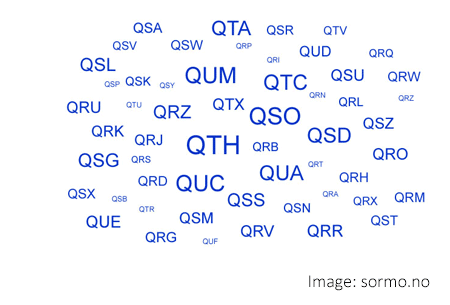This is a free fortnightly newsletter about the New Zealand Net.
If you would like to be notified by email when a new edition is published, please subscribe here.
Browse our Newsletter Archive and List of Net Tips.
Featured key

Eddystone bug with cover removed. Photo: ZL2AHB
The British-made Eddystone S689 bug key has an unusual appearance with its streamlined oval cover (see photo below).
It has another claim to fame: it was apparently the only bug commercially produced in Britain.
morsemad.com describes it as follows:

Made from about 1948. A Bug key that looks a bit like a huge beetle! Only about 350 were ever made. A first batch of 250 was produced in 1948, followed by an order for another 250 in 1949, but sales were poor and only 100-odd of the second batch were completed. The serial numbers can be found stamped onto the connecting strip on the underside of the base. In 1952 a quantity of S689s was sold to Chas H Young of Birmingham and he sold them around that year from his amateur radio shop and these keys do not generally have a serial number. A marvelous design of semi-automatic morse key, with a distinctive shape. Dimensions are 8″ overall length by 3.5″ wide by 2.5″ high (203mm by 89mm by 65mm). I find these Eddystone bug keys easier to use than some bug keys. You can slow the dots down quite a bit, and the handle is moulded nicely to the shape of the thumb and finger.
Very few Eddystone bugs were made, but I think there’s another reason for their scarcity: many of them seem to have ended up in the shack of Richard GMØOGN (pictured). 😉
Quick notes

Graeme ZL2TE has a new rig and will resume Net Control duty on Mondays, starting next week. Graeme ZL1BDS, who has been filling in on Mondays, will handle Sundays, starting this weekend. The roster is:
- Sunday ZL1BDS
- Monday ZL2TE
- Tuesday ZL2GD
- Wednesday ZL1NZ
- Thursday ZL2KE
- Friday ZL4GW
- Saturday ZL4LDY
NZART reduces CW sub-band on 30m. The New Zealand Association of Radio Transmitters is shrinking the CW-only sub-band for New Zealand radio amateurs on 10 MHz by 50 per cent. The sub-band is currently 10.100 – 10.140, but it will be reduced in the new band plan to 10.100 – 10.120. SSB will be introduced in the segment 10.120 – 10.130. Digital modes will get 10.130 – 10.150 (twice the current allocation). NZART band plans are recommendations only, and CW remains legal in the entire band. This change will occur on 1 November. Although it is described as a one-year trial, the end-date may be affected by feedback received. NZART Vice President Warren Harris ZL2AJ says: “For the trial, reports are encouraged to NZART with any feedback on the trial, positive or negative in nature, with your opinion of how NZART should approach the use of 10 MHz beyond the trial period.”
Conditions on 40m have been strange! One night recently, I was Net Control and could not hear Peter ZL1PX trying to check in, even though he is normally very strong. (We are only 35km apart, separated mostly by saltwater.) But Paul ZL1AJY, who is a bit less than 50km from Peter, could hear him well enough. I only knew Peter was calling because Manny VK3DRQ alerted me. But then, that’s one of the benefits of having a network of stations, isn’t it. The following night, ZL1PX was again S9+20.
CW at NZART Centenary Conference? The NZART’s 100th annual conference will be held in May 2026 in Auckland. Would you be interested in organising a display about CW? If so, please contact ZL1NZ.
Picture: What is the invention shown in this 1956 photo? The answer can be found later in this edition.
Scouts get taste of CW traffic handling
By Stephen ZL1ANY
Jamboree On The Air at ZL1UX, Hamilton ARC
Saturday 18 Oct 2025, 0600-0800 UTC
 At short notice I sent out a QNC during Friday’s NZ Net, asking for stations to monitor 7030 kHz on Saturday evening for JOTA contacts with Scouts. Neil ZL1NZ obliged.
At short notice I sent out a QNC during Friday’s NZ Net, asking for stations to monitor 7030 kHz on Saturday evening for JOTA contacts with Scouts. Neil ZL1NZ obliged.
We had about ten kids of various ages participate. Doug ZL4FS is a Scout Master and helped encourage participation.
Dennis ZL1UET, who is our club secretary, brought along a keyer and bug and we found a straight key to plug in also. This excited some interest in the code.
I then set up as an informal telegraph station and got the interested ones filling in NZ Net QTC forms with their various questions and comments (see photo).
I do not think many of them even knew how an old style telegram worked, so I pointed out it was charged by the word – which provoked a brief surprise. They also learned about UTC time and other things from scrutinising the header for the messages.
Neil was the only recipient for all this but valiantly responded. Judging by the dialogue I think they were curious.
In the cellphone era my personal view is that voice traffic does not inspire much interest – even if DX. CW, on the other hand, is a skill (as one of them commented) and something to aspire to.
In future events I suggest:
- a more formal net with a net controller and operators at the various clubs and field stations passing messages on behalf of the Scouts
- a separate keying station for the kids to practise sending. This would let them try it, but also see it working effectively
This presupposes available operators – which has been a challenge. This might improve with time as my intuition suggests a renaissance of interest in the older technologies.
[Thanks Stephen for a great effort. Are any other readers interested in picking up on this idea? Perhaps you could let Stephen know, and we can get a few more CW stations on the air for next year’s JOTA. – Ed.]
Photo flashback

Chatham Islands Radio ZLC, c1982. Photo: Tony Graham
Decoders – taking the fun out of Morse since 1956

Radio & Television News, Feb 1956
Video: Fascinating origins of the ‘phonetic’ alphabet
I wonder if anyone has used the phonetic alphabet on CW. It if helps on ‘phone, then logically it ought to help on CW too, right?
Please let us know if you’ve ever done this.
Net tip: QNW…?
We continue our look at Q signals with QNW…?
It means: “How do I route messages for …?”
It’s always sent as a question; there is no QNW signal.
QNW…? is not something you’re likely to hear on NZ Net, since we are not part of a network of nets (such as NTS in North America) passing traffic via multiple nodes, and we rarely handle 3rd party traffic. So our traffic is typically sent by the message originator and received directly by the message recipient.
But…there’s always the possibility that QNW…? could come in handy.
For example, let’s say that VK3DRQ hasn’t been on the NZ Net for a while. ZL1AYN wants to send him a message, so checks into the net with:
QNW VK3DRQ?
Net control could then ask for a station with 20-metre capability to accept the traffic and try to clear it on the VKCW Net.
ANI QSP VK3DRQ ON 20M?
ZL2GD replies with QSP DRQ (“I will relay to VK3DRQ”).
Net control then asks ZL1AYN to send the traffic via ZL2GD. For example:
ZL1AYN QNK VK3DRQ ZL2GD
The A-Z of Q Signals

A well-run CW net is a lovely thing to experience. Communication between stations is quick and concise, and the net business is conducted with minimal time wasted.
As CW operators, we have many techniques to communicate quickly and efficiently. And if we know and use these techniques, we can often match or exceed the speed and accuracy of voice communication.
One of our most important tools is the set of Q Signals (or Q Codes), and in this series we look at the “essential” ones, in alphabetical order.
Advertising archive

Short Wave magazine, Mar 1962
Suggestions?
If you have suggestions on how to make the NZ Net better, or things you’d like to see covered in these newsletters, please contact ZL1NZ. Articles and photos will be gratefully received!
Thanks for reading, and I hope to hear you soon on the NZ Net!
—
Neil Sanderson ZL1NZ, Net Manager
New Zealand Net (NZ NET)


